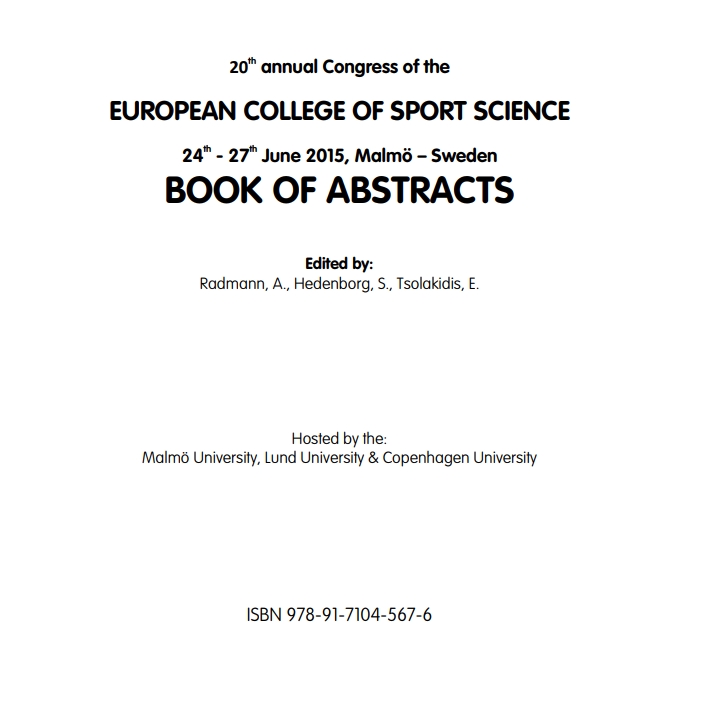Ferioli D1,2, Carlomagno D2 , Connolly D2, Tornaghi M 2, La Torre A 1, Rampinini E2
1, Department of Biomedical Science for Health, Università degli Studi di Milano, Milan, Italy; 2, Human Performance Lab, Mapei Sport, Olgiate Olona, Italy

Performance in basketball is determined by a combination of physical and technical aspects (Ziv and Lidor, 2009). It has been recently demonstrated that free throw (FT) accuracy can be negatively influenced by exercise intensity (HR ~80% HRmax) preceding FTs (Padulo et al., 2014). However, the acute effect of lower limb neuromuscular fatigue on FT accuracy has yet to be investigated. The aim of this study was to determine the acute effect of neuromuscular fatigue induced by a basketball specific exercise, repeated changes of direction (COD), on FT accuracy. Twenty-one amateur basketball players (age: 26.2±8.1 yrs, height: 185±10 cm, weight: 81.6±13.8 kg) were randomly assigned to exercise (EG) or control group (CG). All players performed 4 series of FT with the aim of scoring as many FT as possible in a 10-sec period. The four series of FT were separated by 30-s of rest for CG and 30-s of repeated COD for EG. COD exercise comprised of 180° turns performed repeatedly on a 7 m course following pre-determined acoustic signals. The COD exercise increased in intensity following each series of FT. All subjects performed countermovement jumps (CMJ) on a Force plate (Quattro Jump, Kistler, Switzerland) prior to the first (PRE), and following the last (POST), series of FT. The CMJ performance was reduced only in EG (time x group interaction: p=0.001, p=0.009 and p=0.023 for height, peak power and peak force respectively). In EG the CMJ indices were significantly reduced from PRE to POST measures (height: 45.5±4.2 vs 41.6±4.1 cm; peak power: 51.5±5.7 vs 47.8±5.6 W/kg; Peak Force: 2132±370 vs 2002±287 N, all p<0.05). No differences in CMJ capacity were observed in CG. The number of FT shots taken increased significantly between PRE and the following three series of FT in both groups (p=0.024) without any significant difference between them (p=0.467). However, the number of successful FT was unvaried across FT tests as well as between groups (p=0.743 and p=0.179 respectively). Acute lower limb neuromuscular fatigue induced by COD exercise was not found to significantly impact upon FT accuracy in amateur basketball players. Future studies should further investigate the effect of fatigue induced by basketball specific exercises on FT accuracy and how exercise intensity can influence technical ability.
Book of Abstract 20th Annual Congress of the European College of Sport Science (ECSS). Malmö 24-27th June, 2015, 20-1045